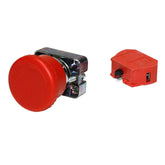Best Practices for Storing Spare Hangar Door Parts
Proper storage of spare hangar door parts is crucial for ensuring reliable door operation and minimizing costly downtime. These components—whether rollers, motors, seals, or structural hardware—are designed for heavy-duty performance, but improper storage can lead to premature wear, corrosion, or mechanical failure. Aviation facilities, hangar door installers, and maintenance teams can avoid these issues by following proven storage strategies tailored for industrial-grade hangar systems.

Maintain Optimal Environmental Conditions
- Temperature Control: Storing parts in a temperature-stable environment between 50°F and 70°F helps prevent thermal stress and material degradation. Components such as motors, rubber seals, and lubricated bearings are particularly vulnerable to extreme heat or cold, which can cause lubricants to break down, rubber to harden, and metal to expand or contract—leading to mechanical inaccuracies and reduced performance.
- Humidity Management: Excess humidity is a leading cause of corrosion, especially on metal components like pulleys, cables, and rollers. Even minor surface rust can compromise the structural integrity or alignment of hangar door systems. Using dehumidifiers, silica desiccants, or climate-controlled storage areas can significantly extend the shelf life of these critical parts.
- UV Protection: Prolonged exposure to sunlight or UV lighting can degrade polymer-based materials such as brush seals and weatherstripping. UV rays break down the molecular structure of plastics and rubbers, leading to brittleness, cracking, and failure under load. Store sensitive materials in opaque bins, protective packaging, or shaded areas to maintain flexibility and sealing performance.
Implement Proper Storage Techniques
Before storing any hangar door part, it is essential to clean it thoroughly to remove dust, oil, moisture, or other contaminants that could cause surface degradation over time. Packaging should be tailored to the component—sealed bags for small parts, padded bins for electrical items, and reinforced shelves for heavy-duty hardware. Clear labeling and a consistent organizational system help teams quickly locate the right parts during maintenance or emergencies, minimizing aircraft hangar downtime and improving service efficiency.
Adhere to Safety Regulations
Storage practices must meet fire and safety standards, especially in aviation and industrial environments. Avoid using combustible materials like untreated wood for shelving, and ensure that any flammable products—such as greases, solvents, or electrical components—are stored in approved fire-rated cabinets. Additionally, all electrical storage equipment should comply with local code requirements to prevent sparks, overloads, or short circuits that could damage sensitive parts or create safety hazards in the hangar environment.

Schedule Regular Inspections
Routine inspections are critical for identifying degradation before parts are put into service. Bearings should be checked for smooth rotation, cables inspected for fraying or corrosion, and seals evaluated for pliability and surface integrity. Inventory systems should be maintained to track lot numbers, shelf life, and usage history. This level of oversight ensures that spare parts are always service-ready and helps facilities avoid deploying subpar components that could cause operational failures or safety risks.
Utilize High-Quality Storage Solutions
Investing in proper storage infrastructure protects the physical condition and operational value of your spare parts inventory. Use containers and bins made of corrosion-resistant or non-reactive materials, particularly for items exposed to fluctuating temperatures or humidity. Custom storage fixtures can provide tailored support for irregularly shaped items such as hydraulic cylinders, long rollers, or bifold door actuators. These systems help preserve alignment, reduce deformation, and allow for safer handling and transport when the parts are needed.
Conclusion
Storing spare hangar door parts isn’t just about shelf space—it’s a strategic part of maintaining operational continuity in aviation environments. By following best practices in environmental control, storage techniques, safety compliance, and regular inspections, facility managers and maintenance teams can ensure their spare components remain in peak condition. For long-lasting, precision-engineered hangar door parts and expert maintenance insight, rely on Hangar Door Parts—your dedicated partner in aircraft hangar door performance and reliability.





